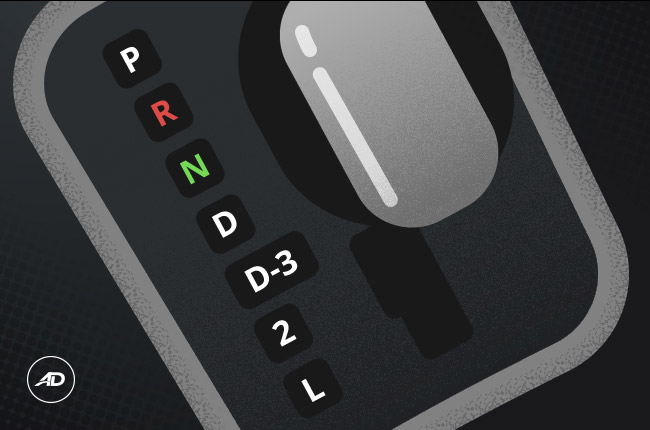
Aside from the obvious ones like the P (Park), R (Reverse), N (Neutral), and D (Drive), there are other things written on the indicator of your automatic transmission lever. These are drive modes you use on specific road situations. But what does L, 2, and D3 mean and when do you use them?
By the way, this is our response to the questions we received about the drive modes after we wrote the article about the things you shouldn’t do when driving an automatic transmission.
L (or Low)
Your guess is right – L stands for low. When in this mode, the engine will stay in its lowest possible gear ratio, which is basically the 1st gear. Some older automatics lock it in 1st gear but for the modern ones, it will shift up to the next gear at a certain range of revolutions per minute (RPM) to prevent damage and to lessen the stress on your vehicle’s engine and transmission.
Where to use?
You can use this gear in downhill or uphill climbs that need steady and low speed – like driving on a heavy, moving traffic on a quite steep hill. For example, if you’re going uphill on an unfamiliar winding road – like the Kennon Road to Baguio or the Pantabangan Road to Baler – you can engage L so that you’ll have enough climbing power.

2
Just like the L mode, the 2 mode means that the engine will only use the first 2 gears of your car. It will maximize the RPM of each gear to get the needed pull from the engine. However, in other models, it will start and lock in 2nd gear and will just move up when a certain range of RPM is reached to mitigate engine damage.
Where to use?
Since the range of RPM is maximized, the 2 driving mode is essential when driving a fairly steep uphill so you can utilize your car’s torque. When taking the Baguio route mentioned above, you can switch to this mode if you’re already familiar with the turns so you could speed up a little. You can also switch to this mode when going downhill to engage engine braking – taking out the stress from your brakes.
Take note, though, that this can affect your car’s fuel efficiency since it will be using more gas in higher RPMs. But keep in mind that your safety should be your number one priority.
D3 (or 3)
As the name suggests, the D3 (or sometimes just 3) mode will only utilize the first 3 gear ratios of your car, or in some, locks it on the 3rd gear only. Just like the 2 and L, it will shift at a higher gear if the maximum RPM has been reached. It will also maximize the RPM range per gear for the needed power and pull.
Where to use?
Since this limits the car up to the third gear only, the speed will also be limited for cruising. This is useful especially when towing a trailer or another car since you have to control your speed. You can also use this during heavy rainfall where slowing down is highly recommended. For other do’s and don’ts in driving in the rain, visit the AutoDeal blog.
Some brands also have the +/- or the M shift mode. This is usually in combination with paddle shifters at the back of the steering wheel; an up and down option on the gear shifter; or a +/- switch on the shifter knob. You can use this to downshift or upshift manually in certain situations without getting out of the automatic transmission capability. For example, when overtaking, it’s recommended that you downshift in order to get the needed power. You can do this with the +/- mode.
These are the most common modes you could see in cars today. Others may have more but that can be car specific so you can refer to your owner’s manual for instructions. With proper use of these driving modes, you will be able to maximize the use of your car even when it has an automatic transmission.
Latest Features
-
The difference between wax and polish / Tips & Advice
Confused about whether your car needs a wax or polish? This article will guide you on what they are and what to choose for your car.
-
The 6 things every Ford Ranger must pass before it leaves the factory / Featured Article
Every Ford Ranger, from the base model to the Ranger Raptor, goes through a full inspection process before it leaves the factory. This includes six steps that make sure it’s ready to drive a...
-
Which GAC AION EV is best for your everyday lifestyle? / Featured Article
The GAC AION lineup has something for everyone, maybe you're after space, speed, or just a smooth city drive. Here's a quick breakdown of which model might work best for your day-to-day life...
Popular Articles
-
Cheapest cars under P700,000 in the Philippines
Jerome Tresvalles · Sep 02, 2024
-
First car or next car, the Ford EcoSport is a tough package to beat
Jun 18, 2021
-
Car Maintenance checklist and guide – here’s everything you need to know
Earl Lee · Jan 12, 2021
-
Most fuel efficient family cars in the Philippines
Bryan Aaron Rivera · Nov 27, 2020
-
2021 Geely Okavango — Everything you need to know
Joey Deriquito · Nov 19, 2020
-
Family cars in the Philippines with the biggest trunks
Sep 20, 2023
-
Head to head: Toyota Rush vs. Suzuki XL7
Joey Deriquito · Oct 28, 2020
-
Why oil changes are important for your car
Earl Lee · Nov 10, 2020
-
2021 Kia Stonic — What you need to know about it
Joey Deriquito · Oct 16, 2020
-
Top 7 tips for buying a used car in the Philippines
Joey Deriquito · Nov 26, 2020





